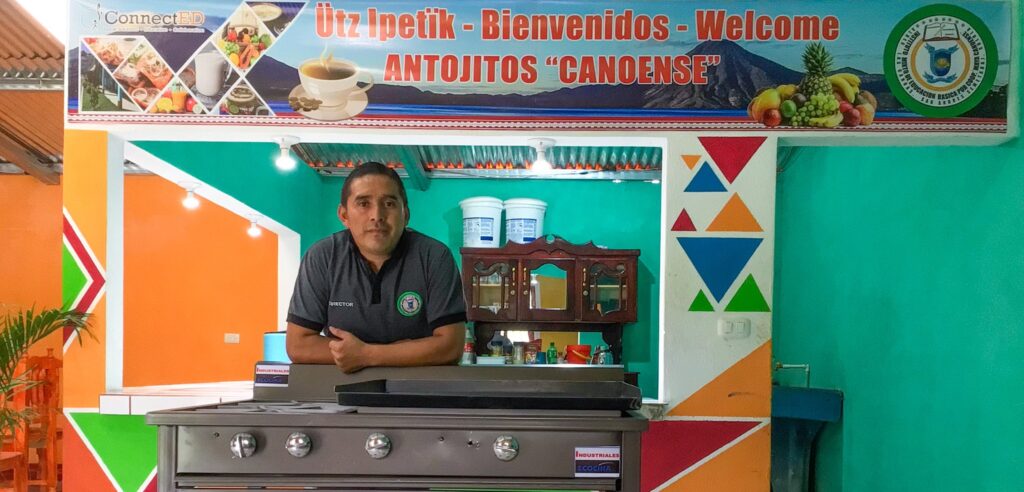Migration in Guatemala has risen drastically over the past decade, with the majority being from rural regions. Due to post-pandemic effects, the country has seen an increase in irregular migrants in transit. Key drivers, such as lack of economic and career opportunities, are frequently cited [1,2]. There is a shared sentiment that migrating to the U.S. or a similar country is the only way to achieve their dreams. Statistics show that 59% of Guatemalans live below the poverty line, and 77% of those who intend to migrate do so in search of economic opportunities[1].
Through a conversation with ConnectED Fellow, primary school teacher, and Principal, Erik Locon Yac, we explored how migration affects education and how he has seen it impact his students and community. Erik understands why migration is popular, however, he reminds his students that a fulfilling life is possible in Guatemala.

Erik states, “I see the impact migration has in my community. Many people have migrated to the United States or more commercial areas of Guatemala.” He recognizes the positives of migrating such as the financial benefits but also highlights the negatives, or results, such as rising prices in their communities.
“Migration has led to an increase in prices on everything from groceries to land. The cost of acquiring land to build your own property has since tripled.”

Erik explained migration has altered the market and has made land unaffordable for those earning local salaries. He notes that the worth of the Quetzal is almost nothing compared to the dollar, complicating savings for locals who earn just enough for daily necessities.
“Here in Guatemala, many of the workers make enough to pay for the necessities they need the same day such as food, transportation – it becomes difficult to save money.”
Although these economic issues might seem unrelated to education, they have direct consequences. Many parents migrate for financial opportunities, leaving their children with one parent or to live with relatives. Erik estimates that out of his 24 students, 6 have parents in the U.S., and at least 10-15 have siblings who have migrated. He believes more families would migrate if they had the funds to do so.
With parents absent, children often lack direction. Erik observes that students’ productivity declines because they feel less motivated to work hard, believing their future lies in migration, or they become consumed by devices sent over.

“Sending resources leads to students changing their interests and focus,” Erik says. By the time some students reach 13-15, they see little point in continuing their education, expecting to migrate like their relatives for a better life. He also speaks to adolescents losing sight of their education and then falling into the wrong crowd exposing themselves to substance abuse and violence.
To motivate students to continue their education, Erik states it starts with the parents. He believes that parents should be transparent with their children about the realities of migrating. They should explain that going to the U.S. requires a lot of work and sacrifice, and it’s not a golden ticket to success.“I always motivate my students to continue their education and pursue their passions. Migrating can be an opportunity, but it is not the solution or only way to have a happy life.”

Teachers like Erik use themselves as examples of people who didn’t leave Guatemala and still have fulfilling lives. They show students how staying and pursuing their dreams strengthens the community. Continuing their education can increase their opportunities for better employment and personal growth. This, in turn, helps uplift the community, creating a cycle of positive change and development.

Bibliography
- 1.USAID. Irregular Migration [Internet]. www.usaid.gov. 2021. Available from: https://www.usaid.gov/guatemala/migration
- 2.USAID. Migration Fact Sheet [Internet]. 2023 Jan p. 1–2. Available from: https://www.usaid.gov/sites/default/files/2023-03/Migration%20-%20Fact%20Sheet%20-%2001.2023_0.pdf
